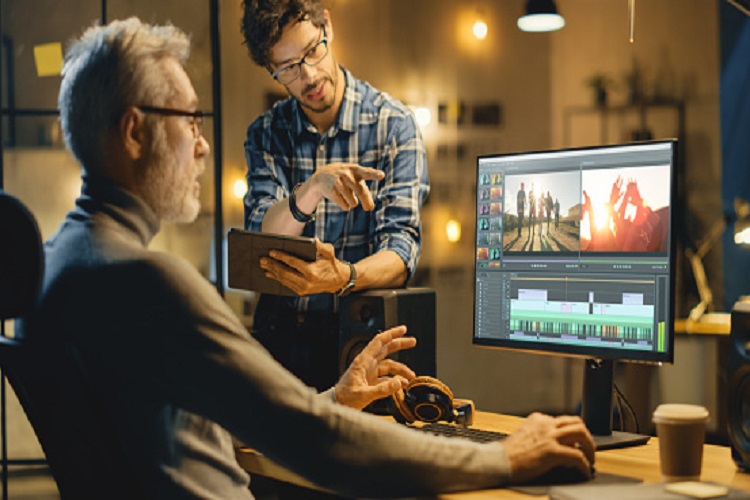In the realm of filmmaking, editing is often referred to as the “invisible art” that shapes the way audiences experience a story. From the pacing of action sequences to the emotional depth of character interactions, editing holds the power to transform raw footage into a cohesive and impactful cinematic journey. Central to this art is the language of cuts and transitions, a nuanced vocabulary that guides the flow of the narrative and elicits emotional responses from viewers. You can also delve into your favorite movies with the help of SimilarTimes and AlternativesTimes.
In this article, we delve into the intricacies of film editing, exploring how cuts and transitions shape the rhythm, emotion, and overall impact of a film and movies will be experienced on a platform like filmyzilla.
Table of Contents
Pacing and Rhythm
The pacing of a film is a critical element that can immerse audiences in the narrative or leave them feeling disconnected. Cuts and transitions play a vital role in dictating this rhythm. Fast cuts and rapid transitions between scenes can create a sense of urgency, ideal for action-packed sequences that heighten tension and excitement. On the other hand, deliberate and extended cuts encourage contemplation, allowing audiences to absorb emotions and atmosphere in more intimate moments.
Match Cuts and Continuity
Match cuts are a technique in which elements from two consecutive shots visually connect, creating a seamless transition that guides the viewer’s eye smoothly from one scene to another. These cuts help maintain continuity and clarity, preventing jarring shifts that can disrupt the film’s flow. By using visual matches such as shapes, colors, or movements, editors establish a visual thread that binds disparate scenes together, reinforcing narrative cohesion.
Emotional Resonance
The art of editing goes beyond mere technical execution; it is about evoking emotions and responses from the audience. The choice of when to cut, how long to linger on a shot, and which transitions to employ all contribute to the emotional arc of the film and movies can be helpful for you if ofilmywap is followed. A sudden cut from a suspenseful scene to a calm one can induce surprise, while a gentle fade can elicit a sense of tranquility. The language of editing thus acts as an emotional conductor, guiding viewers through the various highs and lows of the story.
Jump Cuts and Juxtaposition
Jump cuts involve abrupt transitions within a single scene, often used to convey the passage of time or highlight a character’s thoughts or emotions. These cuts can create an unsettling effect that mirrors the character’s state of mind, intensifying their internal conflict. Juxtaposition, on the other hand, involves placing two contrasting shots side by side to draw attention to their differences or similarities. This technique can be a powerful tool to highlight disparities or create ironic contrasts, inviting the audience to draw connections and engage with the narrative on a deeper level.
Montages and Symbolism
Montages are sequences of quick cuts and transitions that condense time and information, often used to depict character development, training, or transformation. These rapid-fire sequences can create a sense of progression and achievement, capturing the essence of a journey in a compact visual format. Additionally, editors employ transitions with symbolic significance, such as a dissolve from one scene to another, suggesting a merging of ideas or a passage of time.
Seamless vs. Disruptive Transitions
The choice of transitions also affects the viewer’s engagement. A seamless transition, like a match cut or dissolve, maintains the flow and rhythm of the film, allowing the narrative to unfold smoothly. However, editors sometimes opt for disruptive transitions like jump cuts or quick cuts to intentionally create tension or surprise, making the audience question the context or meaning of the abrupt shift.
Silent Storytelling
Editing is a form of silent storytelling, where the narrative is conveyed not through words but through visual and rhythmic cues. Editors can manipulate time, space, and perspective to create an intricate web of storytelling that guides the audience’s perception and emotional journey. The language of cuts and transitions is the grammar of this visual narrative, filmyzilla allows movies and filmmakers to communicate ideas and emotions without explicitly stating them.
Collaboration and Creative Vision
The art of editing is a collaborative effort that involves close coordination between the editor, director, cinematographer, and other key crew members. The editor must interpret the director’s vision and translate it into a coherent visual language. Discussions about the desired emotional impact, narrative structure, and character dynamics all influence the choice of cuts and transitions.
Conclusion
In the world of filmmaking, the language of editing stands as an essential element that shapes the narrative’s ebb and flow. Cuts and transitions are more than technical devices; they are the building blocks of storytelling that guide the viewer’s perception, evoke emotions, and create a seamless cinematic experience. The art of editing transforms individual shots into a symphony of visual storytelling, orchestrating rhythm, emotion, and narrative coherence that resonates deeply with audiences.

